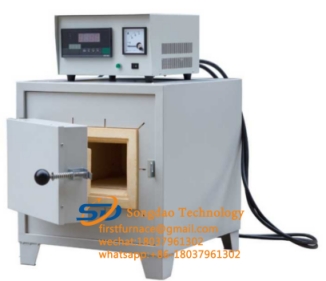- 11
- Apr
What are the factors that affect the heating speed of high-temperature box-type electric furnaces?
What are the factors that affect the heating speed of high-temperature box-type electric furnaces?
1. The power of high temperature box-type electric furnace
When the workpiece is heat-treated and heated, the heating equipment selected is different, and the heating speed is different, but for the high-temperature box-type electric furnace, the heating speed is relatively uniform, and the factor that determines the heating speed is the power and power of the electric furnace The larger the value, the more heat can be supplied per unit time, and the faster the heating speed will naturally be. Therefore, if you use a box-type electric furnace for heat treatment and heating, if you want a faster heating speed, you should choose a higher-power high-temperature box-type electric furnace.
2. Selection of heating process
When using a high-temperature box-type electric furnace to heat the workpiece, the heating process of the workpiece should also be considered. Among them, the heating speed of the workpiece is different for heating with the furnace, preheating heating, heating into the furnace and heating at high temperature. of.
3. In terms of heating the workpiece
In the process of heating the workpiece with a high-temperature box-type electric furnace, if the heating speed is not properly controlled, the temperature difference between the inside and the outside of the workpiece will be too large, and a large thermal stress will be generated inside the workpiece, which will cause the workpiece to deform or even crack. For thick and large workpieces, it is not only limited by the heating capacity of the furnace, but also limited by the heating speed allowed by the workpiece itself. This limitation can be summarized as the limitation of the temperature difference in the section at the beginning of heating, and the degree of burn-through at the end of heating. The limitation of heating and the limitation of heating defects caused by excessive furnace temperature.
4. The temperature difference limit at the initial stage of heating of the workpiece
In the initial stage of heating, the essence of limiting the heating rate is to reduce thermal stress. The faster the heating rate, the greater the temperature difference between the surface and the center, and the greater the thermal stress, which may cause deformation and cracking of the workpiece. For metals with good plasticity, thermal stress can only cause plastic deformation, which is not harmful. Therefore, when the temperature of low carbon steel is above 500 ~ 600℃, the influence of thermal stress can be ignored. The allowable heating speed is also related to the physical properties (especially thermal conductivity), geometry and size of the metal workpiece. Therefore, you must be especially careful when heating large-sized high-carbon steel and alloy steel workpieces, while thin materials can be arbitrary Speed heating.
5. Limitation of the degree of burn-through at the end of heating of the workpiece
At the end of heating, there may still be a temperature difference in the section of the steel. The greater the heating rate, the greater the temperature difference between the inside and the outside, which tends to limit the heating rate at the end of heating of the steel. However, both practice and theory show that it is not advisable to reduce the heating rate of the entire heating process. Therefore, often after rapid heating, in order to reduce the temperature difference, the heating speed or heat preservation can be reduced to obtain a uniform temperature inside and outside.

